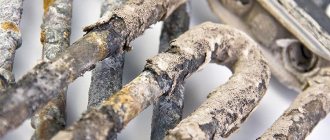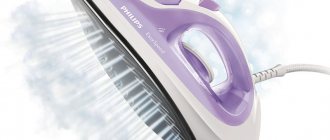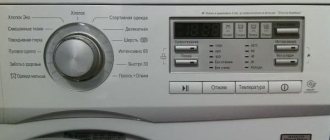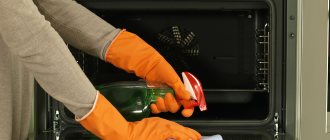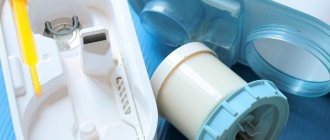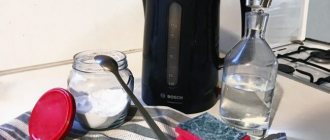When cleaning kitchen utensils in a dishwasher, the temperature inside it reaches 95ºС, which creates favorable conditions for the formation of scale. The deposition of salts dissolved in water and giving it hardness occurs on the tubular electric heater, the walls of the washing chamber, and all parts in contact with the hot liquid.
The design of the apparatus provides for softening the solution, but in regions where there is a lot of lime impurities, these measures are not enough: periodic maintenance must be done to remove the accumulated salt layer. You can rinse the dishwasher using reagents available in every kitchen, or using household chemicals. Proper care of your automatic washer will ensure long, trouble-free operation of the equipment.
- Dishwasher cleaning frequency
- Traditional ways to remove scale
- Mechanical cleaning of salt deposits
- Anti-lime household chemicals
- Care instructions
- PMM catalog with reviews
Dishwasher cleaning frequency
The limescale deposits that form on the walls of the chamber attract food particles and absorb odors from the decomposition of organic matter. An unpleasant aroma that appears when opening the door clearly indicates that it is time for preventative maintenance.
Another sign is associated with increased energy consumption: the heat transfer of the heating element decreases due to the growing limescale layer, and the water heating time increases. The third landmark is the loss of dishwashing quality: the spray nozzles become overgrown with scale and the jets reduce power. Other factors on which the frequency of cleaning the PMM depends:
- frequency of switching on – daily or once a week;
- dirty pots and plates: grease and burnt food are harder to clean than a tea set or vegetable salad dishes;
- operating temperature in the chamber: the higher it is, the more intense the scale builds up, and when the water is warm, a fatty film builds up;
- composition of washing gels - aggressive components clean surfaces better, but their overdose is dangerous to human health; Eco-friendly solutions do not remove fats well.
Dishwasher manufacturers recommend cleaning the washing chamber once a month. But not all housewives follow the recommendations and wipe the equipment as needed: if the dishes shine after the water procedure, then there is no need to interfere with the operation of the machine.
And vice versa, if whitish stains appear on the plates and glasses, it’s time to do preventive maintenance. In practice, PMM care is carried out once every 1–3 months.
lst 11477
Why kitchen appliances require special care
When the washing machine is overloaded, the drum is damaged; if you do not take care of the refrigerator, it stops freezing. To extend the life of the dishwasher, it must be washed regularly, otherwise scale will form, mold will form, the equipment will rust and cannot perform its functions efficiently.
Bosch models, which are especially popular in everyday life, have up to 6 washing programs and temperature modes that clean cutlery and plates from various types of dirt, and include air-conditioned drying.
If you don't take care of your equipment, water begins to leak, mold forms inside, and washed plates and cups develop an unpleasant odor.
Traditional ways to remove scale
The procedure for cleaning the washing chamber equipment from salt deposits begins with manually wiping the impeller and spaces under the seals, checking for traces of mold under the rubber band or on the dish basket. After this, you can prepare a reagent for removing scale from the heating element, circulation pump, sprayers, and pipes by turning on the idle (without utensils) operating mode of the PMM. If lime deposits are found in the initial stage of formation, folk remedies are used.
Washing with citric acid solution
The powder of this substance is available in every kitchen; the required amount depends on the accumulated scale. With a small layer of deposits, 100 g is enough, in advanced cases - up to 250 per procedure. Procedure:
- pour 150–200 g of citric acid powder into the bottom of the machine’s hopper or into the dispenser compartment;
- turn the device on to normal washing mode at a temperature of 90ºС;
- in the middle of the cycle, pause the program for 20 minutes: you need to give time for the reaction of dissolving lime formations in the acidic composition;
- continue to operate the dishwasher until the cycle is completed.
Lemon acid
After stopping, the machine is opened and checked: the cleanliness of the spray holes of the rocker arms, the presence of remains of lime fragments in the door cuff, inside the hopper. If found, remove and wipe with a soft cloth. You can repeat the treatment after 2-3 days with half the dose of powder on a short cycle.
Expert opinion
I work in the household appliance repair industry. Extensive experience in restoring washing machines and dishwashers.
Ask a Question
Citric acid is an effective agent against scale and grease; the reagent is included in factory cleaning tablets. It should be remembered that, in combination with high temperature, the lemon solution can cause darkening of glass and metal dishes: you should not violate the requirement for a cleansing wash without dishes.
Cleaning with vinegar diluted in water
Wear gloves when working with it. Wipe the internal surfaces of the washing chamber with a sponge soaked in the reagent. Further actions are performed as in the case of using citric acid:
- pour 2 cups of vinegar with a concentration of 9% into the bottom of the bunker;
- turn on the wash in hot water mode, pause halfway through the cycle for 20–30 minutes, then continue the process;
- At the end of the program, restart the machine for rinsing to wash away any remaining vinegar.
The procedure ends with wiping the camera and its equipment with a cloth soaked in a weak solution of vinegar. After this, you need to wipe it with a dry cloth and leave the door open to remove the smell.
vinegar
Borax against limescale
Used to clean metal surfaces before soldering. Works well when removing scale from dish baskets, walls and washing chamber doors. The actions are:
- Apply borax to a damp sponge and cover the limescale stain with a thin layer. There is no need to scrub off the deposits; leave the PMM in this state for 20 minutes.
- Set the program with the highest water heating and start the machine.
- Inspect the chamber after completing the cycle; if there are any remaining borax or scale, wipe them off with a sponge. Re-enable idle mode.
Expert opinion
I work in the household appliance repair industry. Extensive experience in restoring washing machines and dishwashers.
Ask a Question
The reagent is available in solid and liquid form. The powder is sold in hardware departments of stores. In pharmacies you buy a solution of boric acid.
Removing deposits with baking soda and peroxide
This mixture allows you to successfully get rid of scale on the heating element and inside the washing chamber of the device. Prevention is carried out in 2 stages: preparing the reagent, washing the hydraulic circuit of the PMM. Sequence of operations:
- pour 400 g of baking soda into a container, add 3 tbsp. spoons of hydrogen peroxide, stir;
- pour a little (20–30 drops) of essential oil into the resulting mass for a pleasant smell, roll it into a ball, and place it on the bottom of the hopper;
- select the long mode, start the wash without loading dishes.
Undissolved mixture residues and scale particles will settle in the filter, which must be removed and washed at the end of the program. After this, repeat the wash without dishes so that the smell from the PMM disappears completely.
hydrogen peroxide
Cleaning procedure
To prevent dirt from accumulating on the doors, they are regularly washed with a wet cloth or napkin soaked in a soapy solution.
You need to wipe the machine, the body of which is made of stainless steel, with a special cleaner, and the control panel with a dry cloth. Drops of liquid should not fall on the buttons.
Washing the strainer
Once a week, it is recommended to remove the shelves from the chamber, soak them in detergent and dry them with a soft cloth. Every 7 or 8 days, it is necessary to remove the mesh filter from the lower basket, soak this part in a soapy solution, rinse with cool water, and return it to its place.
Cleaning the blades
Food residues and hard liquids clog the holes through which the soap solution enters the dishwasher. Clogged blades that supply water must be removed and cleaned with wire, rinsed under the tap.
Processing of seals
In order for household appliances to perform their functions for a long time and efficiently, it is worth purchasing a special chemical composition in the store, which is applied with a sponge to the seal that is installed on the dishwasher door.
See also
Which gloves are best to choose for washing dishes and what to consider?
How to clean a drain hole
If the equipment has stopped and there is water inside, the equipment must be disconnected from the electrical network. After this, you must carefully remove the drain hose. Any blockage found in the hole must be broken through with wire or the “Mole” preparation. If the water does not drain, you need to disconnect the other end of the hose from the dishwasher and rinse under high pressure.
Cleaning the heating element
The scale that forms on various parts of household appliances contributes to the malfunction of the device. The water remains cold if plaque appears on the heating element. You can clean it with citric acid and vinegar. The product is poured into a cup, placed on the top shelf and the machine is turned on.
Cleaning the Trash and Dead Zone
Debris constantly accumulates inside the bottom of the door because liquid does not get there. Remove dirt with a cloth soaked in soapy water. The “dead zone” is disinfected from microbes with vinegar.
To clean grease and scale:
- The baskets are removed and placed in the bath.
- Pour boiling water and add detergent.
- After half an hour, the debris is removed with a sponge.
After rinsing with water, all parts are wiped dry. Baskets are installed in the car.
Checking the condition and cleaning of the sprinklers
Sometimes after washing the drain holes, blades and filter, the dishes come out of the machine in a dirty state. This problem occurs when the detergent is not distributed evenly. To eliminate it, the upper spray arm is removed and cleaned of grease by pulling a wire or wiping it with soda or vinegar. Check how the part functions by placing it under a powerful jet.
Final processing
Having installed the sprinkler in place, turn on the machine, selecting normal mode. If water does not flow well into the tank, remove the inlet valve by unscrewing the nut and replace it with a new element. After processing all parts and cavities, the device is wiped dry, cleaned with lemon juice and washed off with a cotton napkin. The car door is not closed.
Before starting, the equipment is cleaned in the drain. Set the temperature regime for the water heater. Load the dishes so that the solution covers them completely. The amount of washing gel is added in accordance with the instructions.
Mechanical cleaning of salt deposits
When the scale layer is significant, preliminary work is carried out to remove the limescale crust using hand tools. This approach to removing scale involves disassembling the dishwasher into separate components: you need to remove the heating element and disassemble the circulation hydraulic system. It is better to entrust large-scale repairs to a specialist, but you can try to disassemble the device yourself by disconnecting it from communications.
inverted mmm
If dismantling the heater and other parts is successful, clean the items following the following rules:
- soak the item in soapy water with an anti-scale agent, and start treating the surfaces when the crust has softened;
- You cannot use a file, emery cloth or knife, so as not to damage the metal shell of the heating element - you need to clean it with a hard bristle brush;
- Clean the holes of the spray nozzles with a toothpick - do not use a sewing needle.
Before cleaning, dish baskets are soaked in a large container filled with hot water with a descaling agent dissolved in it. After the deposits have softened, remove the plaque from the grates with a toothbrush.
Expert opinion
I work in the household appliance repair industry. Extensive experience in restoring washing machines and dishwashers.
Ask a Question
The price of the electric heater is not too high - if you don’t want to do plumbing work, you can order a replacement heating element at a service center.
How to clean PMM
If you don’t know how to properly clean a machine, you can throw money away and waste an expensive product that was purchased after convincing advertising.
It is important not to leave it in the dishwasher for a long time, so as not to cause harm to the pipes, circulation pump, and the surface of the hopper. In this case, it is necessary to facilitate the interaction of substances with scale so that it is separated from the PMM parts and washed out of the machine completely.
When cleaning your dishwasher with commercial products, do not neglect the instructions on the label. This is necessary to maintain the exact dosage of the powder or gel, keep it in the system for a certain period of time and timely wash it out of the machine.
Cleaning requires one wash cycle lasting no more than 40 minutes.
Anti-lime household chemicals
The procedure for using scale cleaners in PMM is similar to washing a car using traditional methods: the reagent is placed in the dispenser, the device is started in the highest temperature mode. At the end of the cycle, clean the filter from limestone pieces and turn on the dishwasher again without the anti-scale agent to remove the smell of the reagent used.
The industry produces many different products for removing limescale, including the following preparations:
- Tablet cleaner Frau Schmidt (France). Refers to complex cleaning reagents - copes with scale, grease deposits, and other contaminants. The wide spectrum of action of the drug leads to a significant drawback - lime deposits are not removed well enough by these tablets. A pack of two sells for RUR 200.
- Express cleaner Top House (Germany). The release form is liquid, the action is more effective than that of the reagent in the form of tablets. Removes scale, fungus, mold, and fatty deposits. The price of a 250 ml bottle is 320 rubles.
- Fast-acting cleaner (express effect) Clean Home. Designed to dissolve scale, but at the same time solves the problem of removing other dirt and grease. If the machine’s pipes are not clogged, the reagent will clean all the channels and parts of the PMM. The price for a Russian-made drug is from 150 rubles. per pack 200 ml.
- Powder from Electrolux (Italy). The composition is designed to descale machines of this brand, is safe for plastic and rubber seals, and eliminates unpleasant odors. Electrolux capabilities - removes a layer of lime deposits 4 mm thick in one treatment. Price per package of 200 ml – 800 rub.
The label of each cleaner contains information about the method of use and dosage for preparing the solution. It is imperative to follow the manufacturer's instructions: if they are neglected, the outcome will be negative. The scale will not disappear - this is not the worst option; damage to machine parts may be caused.
How to clean mold from a dishwasher
You can get rid of mold with any gel-type bleach. However, frequent use can lead to damage to the appearance of the structure. Apply bleach to the fungus-affected area and wipe with a rubber sponge. Then rinse with water and wipe with a dry cloth.
To prevent future mold growth, regularly wipe areas where liquid accumulates with a dry cloth.
What to do if there is an unpleasant odor
If your dishwasher smells bad, it means it's clogged. The source of debris accumulation can come from different sources:
- Filter. The element most often becomes clogged with debris. This happens due to too large pieces of dirt.
- Door gasket. During the washing process, the sprayer throws debris throughout the chamber, including into the recess between the door. Clean the area with a sponge and detergent.
- Stagnant water. Water may accumulate at the bottom of the dishwasher, which will produce unpleasant odors. To get rid of them and avoid their occurrence in the future, regularly wipe the areas where liquid accumulates with a dry cloth.
- Drain valve and hose. If it was not possible to identify a source of unpleasant odor inside the structure, the reason may lie in the drain hose. Disconnect it from the device and wash it with water. For dense contamination, use a knitting needle or wire.
Care instructions
You can reduce the likelihood of scale formation in the dishwasher at the stage of its selection. When purchasing, you need to pay attention to whether the machine is equipped with a function to protect against the formation of lime deposits, and whether there is a water hardness regulator. In any case, caring for the PMM is necessary, here are the procedures that must be performed:
- Use special dishwasher salt - it is made by purifying the table variety with the addition of other reagents. Under its influence, the composition of water changes, which slows down the formation of scale.
- Use the machine regularly for its intended purpose. Rarely turning on the PMM does not improve the performance of the device: it needs to be started at least once every 3 days.
- Use detergents that contain anti-scale additives. Those powders and gels that soften water are also suitable.
- Periodically carry out dry cleaning using descaling agents. The recommended interval is once every 1–3 months. The harder the water in the region, the more often prevention is carried out.
The number of scheduled cleanings can be reduced by installing devices for softening and filtering water coming from the central water supply system on the inlet main. The regularity of prevention is determined by the user of the machine, based on the brand of PMM and the composition of the local water.
Video
Where else to apply
If you suddenly run out of rinse aid, our acid will come in handy again. Dilute it with water in a ratio of 1:3 and add to the appropriate dispenser.
Some inventive housewives mix lemon crystals into dishwashing powder. Supposedly it cleans better this way. Does this help? It all depends on the quantity; you need to check the proportions when mixing, as manufacturers of combined tablets do.
All detergents have an alkaline structure, due to which they clean dishes from grease. Acidity neutralizes degreasing, and in order for the powder to continue to wash, do not “overdo it” with additives.
Citric acid is a useful remedy. It is a good alternative to more expensive anti-scale agents, but it costs a penny, but the result is the same.
What happens if you avoid cleaning?
Dishwasher users often do not include cleaning their appliances on their list of household chores. Out of ignorance, many people believe that cleaning systems is nothing more than a procedure imposed by marketers to sell products. Skepticism is good in moderation - until the first blockage and breakdown. Not every dishwasher owner who has ignored cleaning is lucky with the long-term performance of the machine.
If the water supply is too hard, even the most powerful dishwasher, such as Bosch or Siemens, will last no more than 3 years - then inevitable failures will follow. Therefore, to ensure the safety of your equipment, do not forget about regular procedures, otherwise you may need to replace the heating element in the dishwasher or other repair procedures.
Let's summarize. To effectively rid PMM of traces of scale, you need to buy a suitable product and use it according to the instructions. If you ignore our recommendations, the equipment will face a series of breakdowns, which cannot always be eliminated without the help of a specialist.
Removing scale using special means
If cleaning is performed with a purchased chemical, follow this procedure:
- Pour the cleaning solution into the container;
- Turn on maximum temperature mode;
- Clean the unit filter;
- Start the device again, but without the cleaning agent. Select the cycle with the longest duration.
Important! Thanks to the repeated cycle, the machine parts are thoroughly washed and the smell of the cleaning agent disappears.
After washing, all internal elements will be cleaned. Plaque and fat will come off of them. The water supply and drainage system will be cleaned. The precipitated salt softens and falls off. Pieces of sediment fall into the filter, so immediately after the first cycle it must be cleared of them and then rinsed with running water.
Important! Clean the filter and spray nozzle regularly - dirt often collects on its blades.


